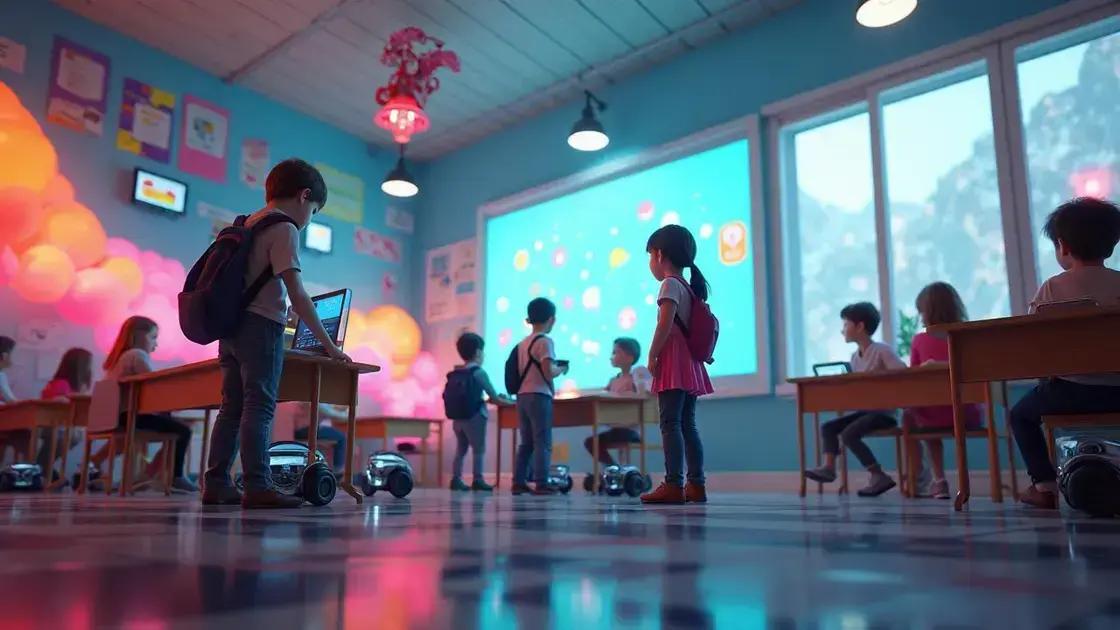Integrating robotics into early childhood education enhances learning by developing essential skills like problem-solving, collaboration, and technological literacy. It requires strategic planning, including selecting appropriate resources, providing educator training, and overcoming challenges such as funding limitations. Success involves starting with pilot programs, building partnerships for resources, and creating a flexible curriculum framework, ultimately preparing students for future technological landscapes.
Integrating robotics into early childhood education is a transformative approach that enhances learning experiences for young children. By introducing robotics early on, educators can foster creativity, problem-solving skills, and technological literacy. This article explores the benefits of robotics in early childhood education, steps to implement it, and the challenges faced during integration.
Benefits of Robotics in Early Childhood Education
Robotics in early childhood education offers a multitude of benefits that can significantly enhance the educational journey for young learners. By introducing robotics, children gain the opportunity to develop critical skills such as problem-solving, logical thinking, and creative exploration. These skills are essential for navigating not only academic challenges but also real-world situations.
Encouraging Collaboration and Teamwork: In robotics-oriented activities, children often work together to solve problems and complete projects. This collaboration fosters teamwork and communication skills, as young learners share ideas and strategize collectively.
Enhancing Technological Literacy: Early exposure to robotics acquaints students with technology, making them more comfortable and adept at using advanced tools. This early familiarity lays the groundwork for their future educational pursuits and career choices.
Moreover, robotics can personalize learning through interactive experiences. Children can engage with robots that adjust to their learning pace, offering customized guidance and boosting individual learning outcomes.
Stimulating Creativity and Innovation: Robotics provides a platform for children to create their own robotic designs and programs. This nurtures creative thinking and encourages students to innovate beyond traditional learning boundaries.
Steps to Implement Robotics Education
Implementing robotics education in early childhood settings requires a structured approach that ensures effective learning. First, it is important to assess the current curriculum and identify opportunities where robotics can be integrated. This involves understanding how robotics can complement existing learning goals and enhance the overall educational experience.
Selecting Appropriate Resources: Choose robots and kits that are age-appropriate and align with educational objectives. Kits like LEGO Education and Bee-Bots are excellent for introducing young children to robotics concepts. These tools should be engaging and easy for children to manipulate and experiment with.
Training Educators: Teachers play a pivotal role in the successful integration of robotics into classrooms. Offering professional development and training sessions enables educators to become comfortable with robotics technology and equip them with the skills to guide their students effectively.
Setting up a dedicated space within the classroom for robotics activities can also foster a conducive learning environment. This space should be flexible, allowing children to explore, build, and test their robotic creations freely.
Implement pilot projects to refine strategies and gather feedback. Observing how students interact with the robots provides insights into what works well and what might need adjustment. This iterative process ensures the program evolves to meet the needs of both teachers and students.
Challenges and Solutions in Robotics Integration
The integration of robotics in early childhood education presents challenges that educators and institutions must address to ensure success. One significant challenge is the lack of adequate funding and resources. Many schools struggle to allocate funds for purchasing robotics kits and technology, which can hinder the implementation process.
Providing Sufficient Training: Another obstacle is equipping teachers with the necessary skills and knowledge. Educators may feel overwhelmed by new technology, making it crucial to provide comprehensive training and ongoing support. This can empower teachers to confidently lead robotics activities.
Moreover, integrating robotics into a traditional curriculum requires adjustments that some schools may find challenging. Educators need to align robotics activities with learning objectives and standards, which can be time-consuming and complex.
Solutions and Strategies: To overcome these challenges, schools can seek partnerships with tech companies and educational organizations that might offer grants or discounted resources. Hosting community fundraising events can also help gather additional funding.
Providing workshops and training sessions can effectively address the challenge of educator preparedness. These can be designed to be practical and hands-on, enabling teachers to learn through experience. Additionally, creating a collaborative network of educators can facilitate the sharing of successful strategies and solutions.
To address curriculum integration issues, developing a flexible framework that allows for gradual incorporation of robotics can be beneficial. By starting with pilot programs, educators can identify best practices and gradually expand robotics integration across different grades.
Conteúdo não disponível
FAQ – Frequently Asked Questions about Robotics in Early Childhood Education
What are the benefits of integrating robotics in early childhood education?
Robotics integration enhances learning by developing problem-solving skills, fostering teamwork, and building technological literacy in young children.
What resources are suitable for implementing robotics education?
Age-appropriate tools like LEGO Education kits and Bee-Bots are ideal for introducing robotics concepts to young learners.
How can educators be prepared for teaching robotics?
Providing educators with comprehensive training and ongoing support enables them to effectively incorporate robotics into their teaching practices.
What challenges might schools face when implementing robotics?
Challenges include limited funding, curriculum integration difficulties, and the need for specialized training for educators.
How can schools overcome financial constraints in robotics integration?
Schools can seek partnerships for grants or organize community fundraising events to gather additional resources.
What strategies can help integrate robotics into the existing curriculum?
Developing a flexible framework and starting with pilot programs can help align robotics activities with educational objectives.
















































